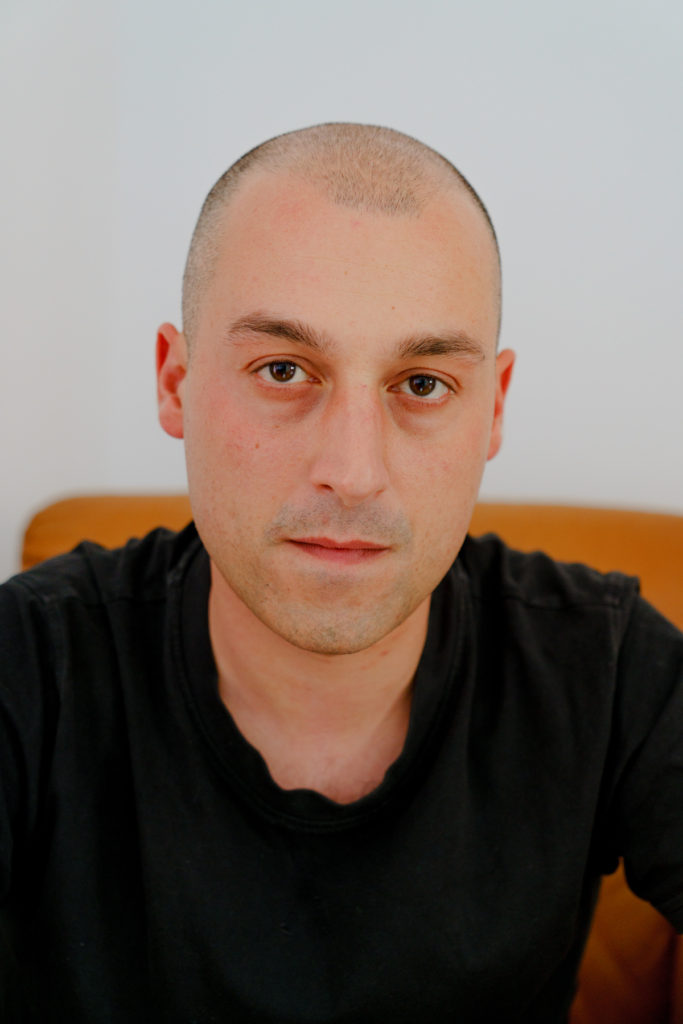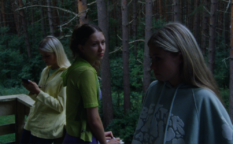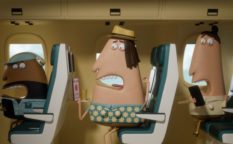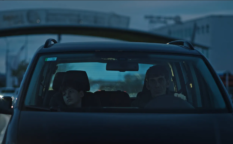Diego Marcon: “The idea was to create a film that had to be percieved as a coded language of a very archetypal cinema genre, and to pervert it from the inside”

Italian visual artist and director Diego Marcon is in Cannes with his fourth short film The Parents’ Room which screens in Directors’ Fortnight programme of the festival.
Unusual for its simulated animation technique, and the story itself which sees a man singing about a terrible crime he committed, The Parents’ Room is a film that will probably make a long international festival round.
We met Marcon at Plage Quinzaine in Cannes to talk about his choices regarding the simulation of the stop-motion animation, references to classics, and his collaboration with the composer Federico Chiari and the modeller Lorenzo Cianchi.
Let’s imediately start with the animation technique in the movie. Can you tell us something about the choices you made?
Basically I had this idea back in January 2019 when I made the first draft for The Parent’s Room. I wanted to have a stop-motion, but at the same time I was trying to avoid as much as possible the making of figurines. And that is of course something very particular for the technique, and you have to shoot every single movement. I decided to work on a human-size set and to turn the actors into a form of puppets. In this way that problem was solved. From here comes the idea of the prosthetics and making of hyper-realistic masks, and than hope that the spectator will have a feeling that these are actually well animated puppets and not real humans. So, everything started with my dislike for the doddery movements in stop-motion animation. And then, there was one CGI compositing, and setting up some stuff. I actually like such kind of hybrids, especially when it comes to the room, the family and their private world which is only theirs. The CGI of course also gave some speculative thoughts about it.
It is interesting that you chose to turn ‘The Parents’ Room’ into a musical
The idea with the composer Federico Chiari on designing the music was pretty clear. Of course, there are some very obvious references – pop jazz in the spirit of Frank Sinatra or just a classical Hollywood score, but then, while we were working on it, we decided to use horns, trumpets, wooden objects in order to create the simulation of choking. So, the reference to this kind of archetypal music is clear, but Frederico wanted to make it more dark and joyless.
As for the story, I think that the idea was to create a film that you would have to percieve as a coded language of a very archetypal cinema genre and to pervert it from the inside.
Shaping such script can’t be that easy.
While I was working on the film, I was learning that sadly every week , if not every day, we have a case of femicide in Italy. It is either killing a wife or a man killing his children and then himself, mostly as a form of revenge. In ‘My Parents’ Room’ my point of view is not social, but I am ina wayx pointing out that suicide is also an act of extreme awareness at the end of conciousness. Of course it’s all pathologic. When you eventually have to face the reality, it must be shocking to the point that suicide somehow follows.
The story shapes in a really natural way around this idea of using characters dressed as puppets. You see, I am not interested in story-telling at all, and everything is so scalic. He sings “at the end I killed myself, too”
The camera positioning and the angles are very ‘classical’.
One of my biggest pleasures is the structure. I love the structure. Basically, we didn’t shoot a frame more, and everything was as planned. Every frame is like an archetype. The boy on the floor with the badge gazing at the camera, and close-up of the girl, it’s all mocking some classical cinema genre codes. The choice of 35mm of course also fallows those ideas, because such film couldn’t have been shot in any other format as 35mm stands for the classical cinema.
Before we started shooting, I rewatched all films by Adrian Lyne which I must say I love. It’s incredible that this guy made only eight feature films, but they are all iconic. He often uses a type of ‘fog’ which we also used on the set to create the feeling of humidity. There was also the recalling of the idea of choking. At the end, the film is all about language. Frame and composition was the goal.
Tell us something about the cast, and how was it working with children on this type of film?
They all wore full face covering masks which made the contact impossible in a way. We discussed the type of masks they were going to have with the modeller Lorenzo Cianchi. We defined the facial expressions, the emotions projected on them. Such masks are not of the type that Robin Williams was wearing in Mrs. Doubtfire which have the fragmented make up that allows movement. In our case, that’s completely oposite. Once the mask is on, you can’t do anything but move the lips. The children were incredibly good. We shot at the beginning of September, and for them it was a bit challenging to have those massive things on their faces in which the skin doesn’t breathe. On the other hand, they just had to learn their lines, lip synch and not move much. Everyone was simply great.
















